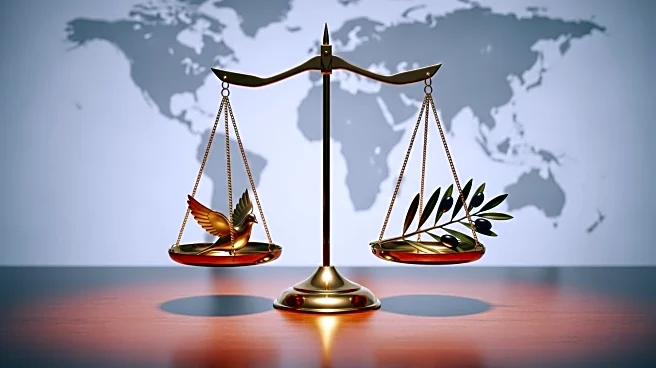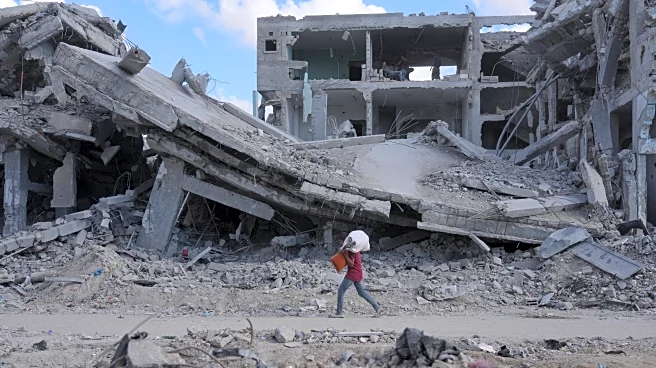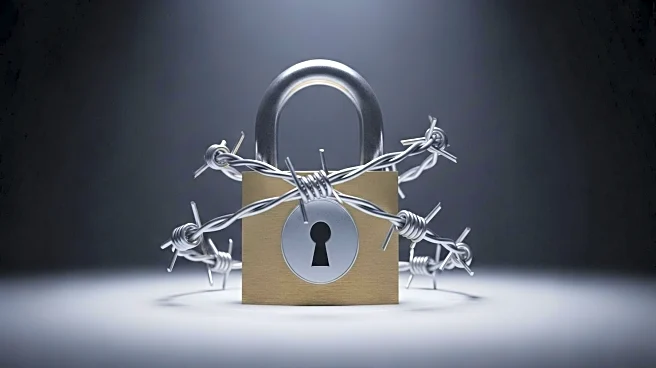What's Happening?
A ceasefire between Israel and Hamas, brokered by President Trump, is holding after two years of conflict. The agreement includes Israeli forces pulling back to agreed-upon lines in Gaza and the release
of nearly 2,000 Palestinians from Israeli prisons. In exchange, Hamas released 20 living Israeli hostages and several bodies of deceased hostages. The ceasefire has allowed humanitarian aid to begin entering the Gaza Strip, and displaced Palestinians are starting to return to their homes. Celebrations have taken place as families reunite, and aid trucks have crossed into Gaza, providing much-needed supplies.
Why It's Important?
The ceasefire marks a significant step towards peace in a region long plagued by conflict. It has immediate humanitarian benefits, allowing aid to reach those in need and enabling families to reunite. The release of hostages and prisoners is a critical component of the agreement, potentially easing tensions and fostering dialogue. This development could influence U.S. foreign policy and its role in Middle Eastern peace processes. Stakeholders such as international aid organizations and diplomatic entities stand to gain from the stability and cooperation fostered by the ceasefire.
What's Next?
The continuation of the ceasefire will depend on both parties adhering to the terms of the agreement. Monitoring by international observers may be necessary to ensure compliance. Further negotiations could be pursued to address underlying issues and prevent future conflicts. The U.S. may continue to play a role in facilitating dialogue and supporting humanitarian efforts in the region.
Beyond the Headlines
The ceasefire could lead to long-term shifts in regional dynamics, potentially influencing future peace agreements. Ethical considerations arise regarding the treatment of prisoners and hostages, and the role of international law in conflict resolution. Cultural impacts include the potential for increased understanding and cooperation between communities historically divided by conflict.












